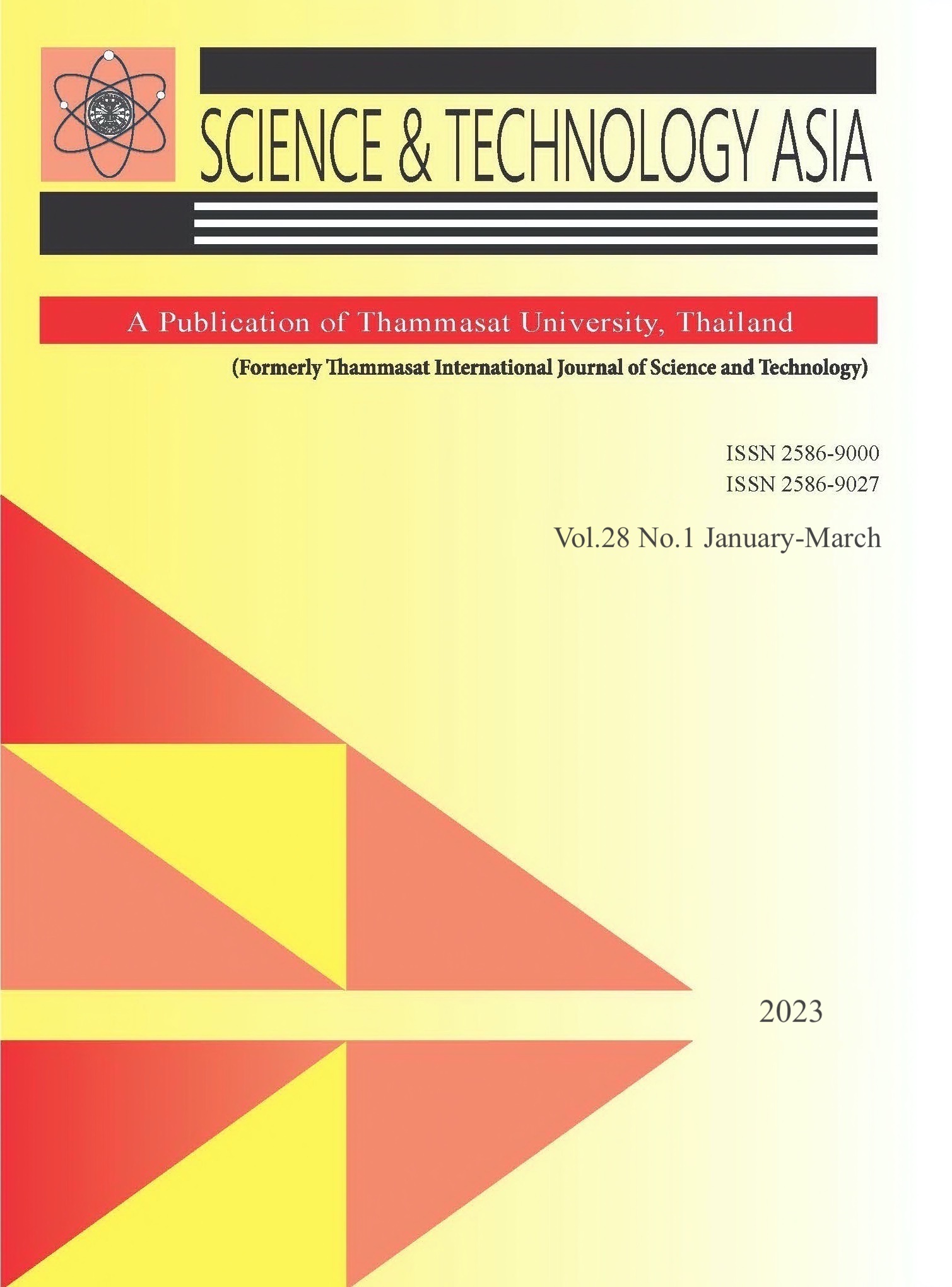In vitro Drought Tolerance of Oryza sativa L. ‘Tubtim Chumphae’ Callus, Valuable Rice of Thailand
Main Article Content
Abstract
Droughts have a serious impact on the environment and negatively influence agricultural productivity. Improved knowledge of plant adaption would help elucidate the mechanisms of their responses to drought stress. Drought tolerance was assessed in the Thai rice cultivar Tubtim Chumphae, using calli as explants. Three-week-old calli were cultured on Murashige and skoog 1962 (MS) medium supplemented with 2 mg/L 2,4-D and 0.5 mg/L BAP for initiation, in combination with 0, 2, 4, 6 or 8% (w/v) PEG 6000. All samples were cultured at 25±2ºC with a 16/ 8 h light/ dark cycle ( 40 μmol.m- 2. s- 1) . Treated calli showed decreased growth performance and survival percentage when cultured at higher PEG 6000 concentrations, except in root formation. Survival percentages of all treatments were significantly different from the control but remained high, indicating drought tolerance of Tubtim Chumphae rice. These findings can be used to improve adaptation mechanisms of drought-tolerant rice cultivars under drought stress and be applied for drought tolerance-level screening of other crop species. Drought stress information will be useful for rice breeding to increase the resistance of droughttolerant rice cultivars in conjunction with other agronomic features.
Article Details

This work is licensed under a Creative Commons Attribution-NonCommercial-NoDerivatives 4.0 International License.


